Commercial Interpretation of Words and Phrases of Taxing Statutes by Ram Dutt Sharma Edition 2024
Commercial Interpretation of Words and Phrases of Taxing Statutes by Ram Dutt Sharma Edition 2024
Description
Commercial Interpretation of Words and Phrases of Taxing Statutes by Ram Dutt Sharma Edition 2024
Commercial Interpretation of Words and Phrases of Taxing Statutes by Ram Dutt Sharma Edition 2024
Explore the foundational principles of Interpretation of Words and Phrases of Taxing Statutes by Ram Dutt Sharma, ISBN 9789356037007, is a comprehensive resource published by Commercial Law Publishers. Spanning 440 pages Discover key concepts like statutory interpretation, precedents, and procedural laws. Get valuable insights on tools for interpretation, including internal and external aids, while understanding the significance of special laws and general laws. Learn about the nuances of statutory provisions, definitions, and clauses, and gain clarity on concepts like ejusdem generis and estoppel. Dive into the complexities of tax law with expert guidance on cross-examination, full disclosures, and charging provisions. Gain a comprehensive understanding of judicial discipline, precedents, and constitutional provisions that shape tax law interpretation. Whether you’re a legal professional, student, or enthusiast, Insights Book offers valuable insights into the intricate world of tax law interpretation.” Now available with a 27% discount plus free shipping for a limited time.
| Content | Page |
| Chapter 1. Introduction | |
| Foundational principle for a charge under Tax Statutes | 1 |
| Purpose of Interpretation | 1 |
| Statute must be read as a whole | 2 |
| Sources of Rules | 2 |
| Particulars in a Statute | 3 |
| Tools in interpretation | 4 |
| Internal aids to construction vis-a-vis External aids to construction | 7 |
| Preliminary Steps before attempting to interpret a given statute: | 8 |
| Special Law Overrides General Law | 9 |
| Principles of Statutory Interpretation | 10 |
| A statute is either perpetual or temporary | 17 |
| Undefined words | 19 |
| Definitions in other statute | 19 |
| Plain Meaning Rule | 20 |
| Rules of Language | 20 |
| Judicially defined words | 21 |
| Chapter 2. Act | |
| Which can we Regard as the special Act and which the General ? | 23 |
| When both the Acts show non-obstante clauses; therefore, the question which arises for consideration is which Act will prevail | 24 |
| Chapter 3. Amendment | 26 |
| Chapter 4. An Act to Amend and Consolidate the Law | |
| Meaning of consolidation of the law | 28 |
| Objective of Income-tax Act, 1961 | 28 |
| Chapter 5. Annul | 29 |
| Chapter 6. Bare Act | |
| Literal Interpretation | 32 |
| Contents of Bare Act | 32 |
| Role of ‘Preamble’ in interpretation of statute | 32 |
| Examples of Bare Act | 33 |
| Chapter 7. Casus Omissus | |
| The casus omissus cannot be supplied by the Courts Supplying ‘casus omissus’ which was not permissible and could | 35 |
| only have been done by the Supreme Court in an appropriate case Casus omissus broadly refers to the principle that a matter which has not been provided in the statute but should have been there, | 36 |
| cannot be supplied | 36 |
| Chapter 8. Caveat | |
| Meaning of a Caveat | 37 |
| Content to Be included in a Caveat | 37 |
| Purpose of a Caveat | 38 |
| Where can a Caveat be Lodged? | 38 |
| Chapter 9. Charging Provision | |
| Charging section should be strictly construed while the procedural sections should be liberally interpreted | 40 |
| Chapter 10. Circulars or Instructions | |
| Nature of a CBDT circular can be summarised in the words of Hon’ble Supreme Court | 42 |
| Binding Nature of Circular/Instruction | 43 |
| Chapter 11. Clause | |
| Clue to Identify whether a part of section is Clause or Sub-section | 47 |
| Chapter 12. Code | |
| Chapter 13. Collegium | |
| Dispute Resolution Panel (DRP) is an income-tax authority | 50 |
| Chapter 14. Cross-Examination | |
| What is Cross-Examination? | 51 |
| Requests for cross-examination may be denied | 51 |
| Types of Evidence | 52 |
| Technical Rules of Evidence do not Apply to Income Tax Proceedings | 52 |
| Lack of cross-examination & violation of principle of natural justice | 52 |
| Chapter 15. Definition Clause (Interpretation) | |
| Definitions in other statutes | 68 |
| Chapter 16. Deletion | 69 |
| Chapter 17. De Novo | 70 |
| Chapter 18. Derived From | 72 |
| Chapter 19. Dismiss | |
| ‘Appeal is Dismissed’ | 74 |
| Dismissal of Appeal by Appellate Commissioner | 74 |
| “SLP Dismissed” : | 74 |
| SLP is Dismissed, however, the question of law is kept open | 75 |
| Chapter 20. Ejusdem Generis | |
| Need for the Doctrine | 77 |
| Essentials of the Doctrine of Ejusdem Generis | 78 |
| Chapter 21. Error of Jurisdiction or Lack of Jurisdiction (Excessive Jurisdiction) | |
| Nullity when occurs | 80 |
| Jurisdictional Error | 81 |
| Few Instances: Jurisdictional Error | 81 |
| Lack of Jurisdiction (Excessive Jurisdiction) | 81 |
| Few Instances: Lack of jurisdiction (excessive jurisdiction) | 82 |
| Chapter 22. Estoppels | |
| Requirements of Promissory Estoppel | 95 |
| Conditions for application of Doctrine of Estoppel | 96 |
| Exceptions to Estoppel | 96 |
| Principles of estoppel not apply to Income Tax proceedings | 96 |
| Doctrine of Promissory Estoppel is not Applicable Against the State while Exercising its Legislative Power | 97 |
| Chapter 23. Exception | |
| Exceptions & saving clauses | 100 |
| Chapter 24. Exemptions | |
| Exemption Clause – Strict Construction | 101 |
| Chapter 25. Explanation | |
| Object of an Explanation to a statutory provision | 106 |
| Chapter 26. For the Removal of Doubts | |
| Clarificatory or Retrospective – who decides | 110 |
| Chapter 27. Full and True Disclosures | |
| What is full and true Disclosure | 111 |
| What does full and true Disclosure mean | 111 |
| Chapter 28. Includes | |
| Chapter 29. Income | |
| Inclusion of all sorts of subsidies within ambit of ‘Income’ under Section 2(24) is not unconstitutional | 115 |
| Term “income” as defined in section 2(24) does not include “interest” referred to in section 56(2)(viii) or interest received in MACT award | 116 |
| Chapter 30. Income Tax Law | 119 |
| Chapter 31. Judicial Discipline | |
| Assessing Officer is bound to follow High Court ruling given in assessee’s favour even if Department has filed SLP against the decision to Supreme Court | 121 |
| An order of High Court does not become inoperative merely because Department filed an appeal or SLP against it | 121 |
| Binding nature of order of another bench – Judicial discipline [Article 226] | 122 |
| Judicial discipline demands that subordinate authorities shall accept the decisions of Tribunal as binding precedent | 122 |
| Chapter 32. Judicial Precedents | |
| Meaning of Precedent | 124 |
| Definition of Precedent | 125 |
| Origin of Precedent | 125 |
| Object of Doctrine of Precedent | 125 |
| Binding nature of Precedents | 126 |
| General Principles | 126 |
| Exception to the doctrine of Precedents, i.e., when Precedent ceases to be Binding | 126 |
| Legislative Amendment | 128 |
| Chapter 33. Law | |
| Judges to Apply the Law | 157 |
| Meaning of Law | 157 |
| “LAW” Defined | 158 |
| Generally the term “law” is used to mean three things: | 159 |
| Origin of Law | 159 |
| Nature of Law | 160 |
| Functions of law | 160 |
| Rule of Law | 161 |
| Role of law in Business | 161 |
| Role of law in Society | 161 |
| Forbidden by Law mean: | 162 |
| Chapter 34. Literal Rule | |
| Advantages of the Literal Rule | 165 |
| Disadvantages of the Literal Rule | 165 |
| Chapter 35. Machinery Provision | |
| While interpreting machinery provisions of a Taxing Statute Court should give effect to its Manifest purpose: SC | 167 |
| Chapter 36. Mandatory or Directory | |
| Difference between Mandatory and Directory provisions | 170 |
| Rules for determination of Mandatory and Directory Statute | 172 |
| Intention of the legislature: | 172 |
| Purpose behind the Statute: | 172 |
| Chapter 37. Marginal Notes | |
| Definition of Marginal Notes: | 176 |
| Limitations of Marginal notes as internal aid to construction: | 176 |
| Chapter 38. May or Shall | 179 |
| Chapter 39. Means | 181 |
| Chapter 40. Mutatis Mutandis | 183 |
| Chapter 41. Natural Justice | |
| Adjournments | 185 |
| Situations of violation of principles of natural justice in taxation laws | 185 |
| Rule against Bias | 187 |
| “Justice must not only be done, but must be seen to be done” | 187 |
| Right to Fair Hearing | 188 |
| Chapter 42. Non – Obstante Clauses | |
| Non-obstante clause in Section 153A does not exclude Applicability of Reassessment Proceedings | 204 |
| Bombay High Court decodes Non Obstante Clause | 204 |
| Non-obstante clauses are not always to be regarded as Repealing Clauses nor as clauses which expressly or completely supersede any other Provision of the Law | 207 |
| Chapter 43. Nothing Contained In | 208 |
| Chapter 44. Notwithstanding Anything Contained In… Distinction between the Expression ‘Subject to other provisions’ and the expression “Notwithstanding anything Contained in..” | 211 |
| Chapter 45. Obiter Dicta | 212 |
| Chapter 46. Omission | 214 |
| Chapter 47. Oral Order or Judgment | |
| Oral and Written Judgments | 218 |
| What is a Judgment? | 218 |
| The term ‘Judgment’ has been defined under section 2(9) of the Civil Procedure Code as under: | 218 |
| Judges should speak through Judgements and Orders, not issue oral directions: Supreme Court | 218 |
| Chapter 48. Per Incuriam | |
| A Decision is given per Incuriam when the Court has Acted | 220 |
| Tribunal has no Jurisdiction to hold that a Particular Decision of Jurisdictional High Court has been rendered per Incuriam or sub Silentio | 222 |
| The Proposition that a decision per Incuriam need not be followed as a Binding Precedent is Well-established | 224 |
| Chapter 49. Perversity | |
| Perverse | 225 |
| Test and Benchmark of Perversity is Far Stringent and Strict | 225 |
| Chapter 50. Precedent | |
| Doctrine of Precedent in India – a British Legacy | 238 |
| Pre-Independence | 238 |
| Post-Independence | 238 |
| Supreme Court | 238 |
| High Courts | 238 |
| Lower Courts | 239 |
| Precedents | 239 |
| Rules for Reading the Precedents | 239 |
| Circumstances that Weaken the Binding force of a Precedent | 239 |
| Precedent ceases to be a Binding Precedent | 239 |
| Circumstances Weakening the Binding force of Precedents | 240 |
| Constitutional provisions regarding precedents of the Supreme Court – Scope of Article 141 | 240 |
| Use of Foreign Decisions | 242 |
| Chapter 51. Prescribed | |
| Chapter 52. Presumption | |
| What is the Presumption of Statutes? | 244 |
| Taxing Statute is to be Construed Strictly | 245 |
| Presumption against Injustice or Absurdity | 246 |
| Chapter 53. Procedural law | |
| Meaning of Procedural Law | 247 |
| Nature of Procedural Laws | 248 |
| Chapter 54. Proceeding | 252 |
| Chapter 55. Prohibited By Law | |
| What is Meaning of ‘Prohibited by Law’ | 255 |
| Duties of an Auditor while Conducting tax audit of a Pharma Company under Section 44AB of the Act | 256 |
| Supreme Court’s decision | 256 |
| Chapter 56. Prospective | |
| Meaning of the Word “Prospective” | 259 |
| Prospective vs. Retrospective – Cardinal Principle of the Tax Law | 259 |
| Supreme Court provides clarity on Prospective versus Retrospective operation of Tax Amendments | 259 |
| Chapter 57. Proviso | |
| Proviso (a Condition) : | 262 |
| How to know the NUMBER of a Proviso? | 263 |
| Chapter 58. Punctuation | 265 |
| Chapter 59. Quash | |
| What is a Quashing order? | 266 |
| Chapter 60. Ratio Decidendi | |
| Ratio decidendi (Literally means ‘Reason for Deciding’) | 267 |
| Law of Precedents | 268 |
| Elements of a Precedent | 268 |
| Constitutional Provisions Regarding precedents of the Supreme Court – Scope of Article 141 | 268 |
| Ratio decidendi : The reason or Grounds of a Judicial Decision | 270 |
| Chapter 61. Removal of Difficulty | |
| Removal of Difficulty order may be made under a Statute Subject to the following Requirements being met up with: | 271 |
| Chapter 62. Repeal | |
| Effect of Repeal [Section 6 of General Clauses Act, 1897] | 273 |
| Contents | xv |
| Section 6A : Repeal of Act making Textual Amendment in Act or Regulation | 274 |
| Subordinate Legislation under the Repealed Statutes | 274 |
| Chapter 63. Res Judicata | |
| For making Res Judicata Binding, Several Factors must be met up with: | 276 |
| The Doctrine of Res Judicata is based on Three Roman Maxims: | 276 |
| Key Principles of Res Judicata | 277 |
| Applicability of Res Judicata | 277 |
| Non-Applicability of Res Judicata | 277 |
| Purpose of Res Judicata | 277 |
| The Nature of Res Judicata | 277 |
| Scope of Res Judicata | 278 |
| Res Judicata of Foreign Judgement – Execution of Foreign Awards and Decrees in India | 278 |
| Chapter 64. Retrospective | |
| Meaning of Retrospective | 285 |
| Nature of Retrospective Legislation | 285 |
| Retrospective Operation Means | 286 |
| Clarificatory or Retrospective – Who decides | 287 |
| Constitutional Restriction on Retrospective Laws | 287 |
| Chapter 65. Rule | 320 |
| Chapter 66. Rule Absolute | 321 |
| Chapter 67. Save as Otherwise Provided in This Act… | 322 |
| Chapter 68. Saving Clauses | 323 |
| Chapter 69. Schedule | 325 |
| Chapter 70. Section | 327 |
| Chapter 71. Sub – Section | |
| Sub-section Example | 328 |
| Clue to locate a ‘Sub-section’ in a Section | 328 |
| Section & Sub-section’ | 328 |
| Chapter 72. Set – Aside | 329 |
| Chapter 73. Short Title | 332 |
| Chapter 74. Stare Decisis | 333 |
| Chapter 75. Subject to the Provisions of… | |
| Difference between: (a) ‘Non-obstante’ Clause and (b) ‘Subject to’ other Provisions | 337 |
| Chapter 76. Sub-Silentio | 339 |
| Chapter 77. Substantive Provisions versus Technical Provisions | |
| Sequencing of Provisions | 342 |
| Contents | xvi |
| Chapter 78. Substantive Law | |
| Concept of Substantive Law | 352 |
| Meaning and Nature of Substantive Laws | 352 |
| Nature of Substantive Laws | 353 |
| Sources of Substantive Laws | 353 |
| Other Sources of Substantive Laws include: | 354 |
| Limitations of Substantive Laws | 354 |
| Chapter 79. Suo Moto | |
| Notable Cases | 355 |
| Chapter 80. Sufficient Cause | |
| Meaning of the word “sufficient cause” | 361 |
| Chapter 81. Tax | |
| Definition of Tax: | 370 |
| Strict Construction of Taxing Statutes | 370 |
| Constitutional Aspects of Taxation | 371 |
| Constitutional Provisions Relating to Taxation | 371 |
| Taxes are the Price that we Pay for Civilization | 379 |
| Chapter 82. Ultra Vires | |
| Meaning of Ultra Vires | 380 |
| Constitutional Validity | 381 |
| Chapter 83. Without Prejudice To… | |
| ‘Without Prejudice’ Means | 383 |
| Chapter 84. Important Common Legal Terms | 385 |
| Chapter 85. Interpretation Act, 2005 | 394 |
| Chapter 86. The General Clauses Act, 1897 | 408 |
Additional information
| Weight | 0.5 kg |
|---|---|
| Authors | |
| Publisher | |
| Binding | |
| Edition | |
| Language |

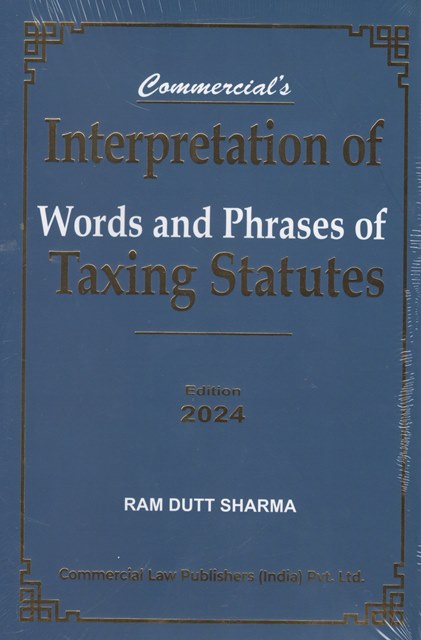
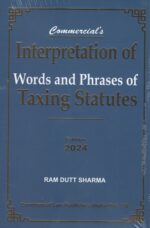
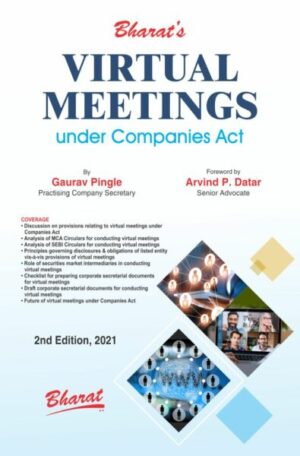
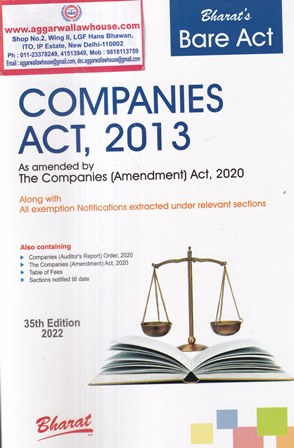
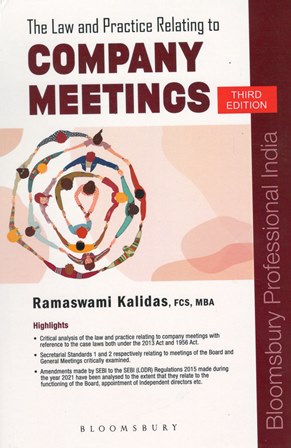
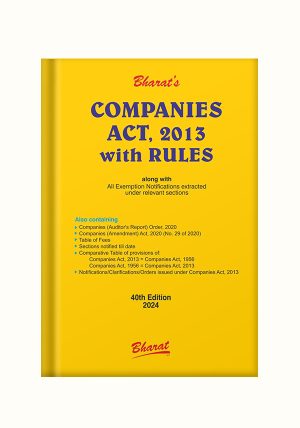
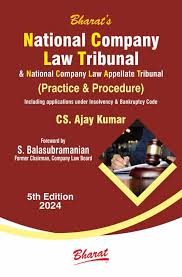
Rating & Review
There are no reviews yet.